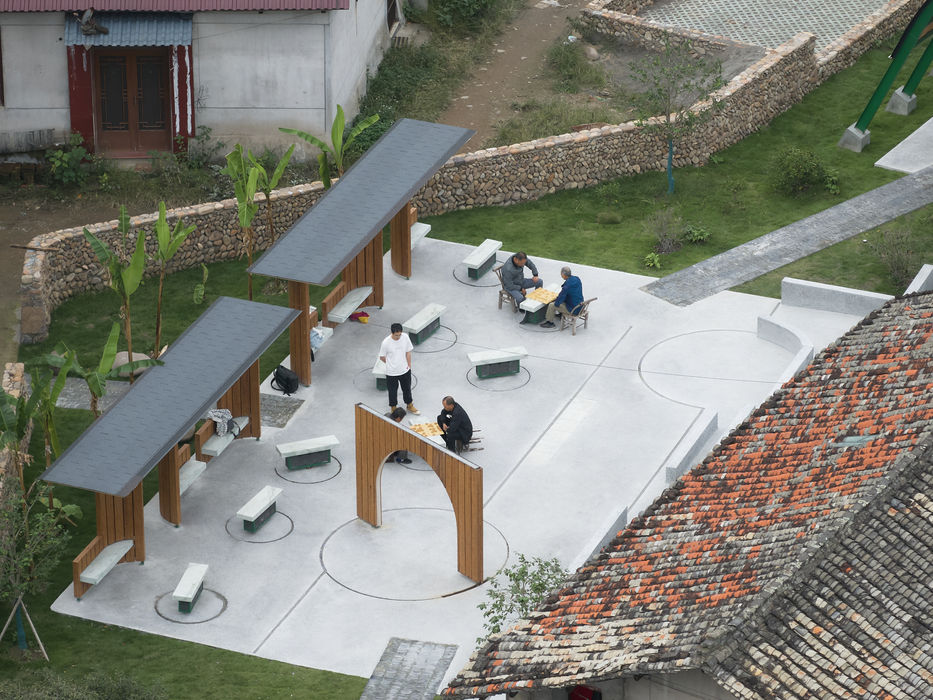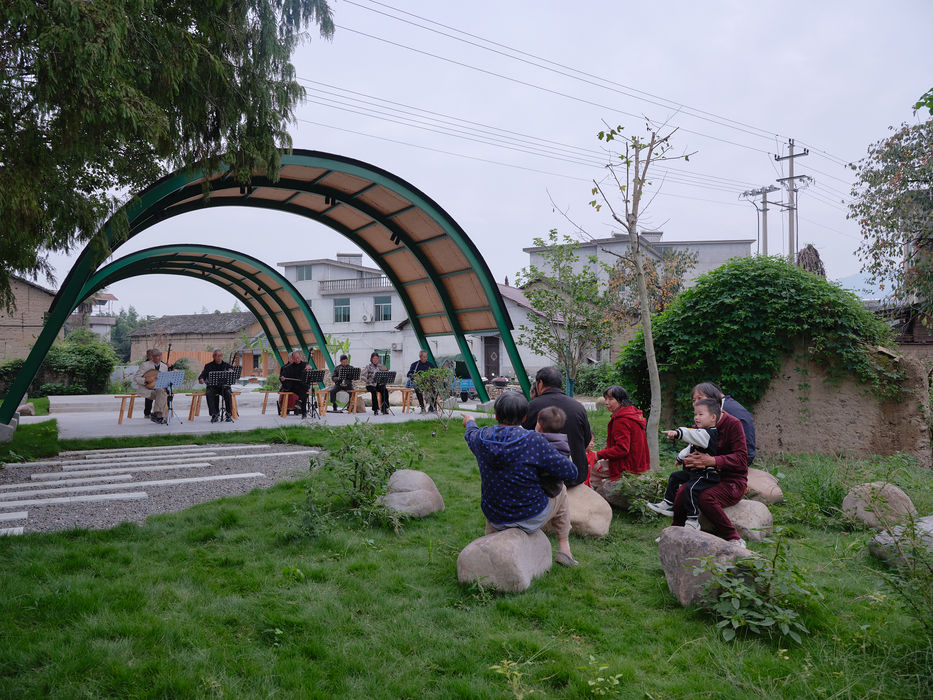
Xiajie Tea Plaza
下街茶广场(建成)
2023-2024
IDA Bronze Award 美国国际设计奖铜奖(景观类)
摄影:梅可嘉、衍述设计
下街茶广场坐落于古市镇千年老街的东端之处。这片场地,过去是松阳县菜园茶的起源地,秉承“两个半”菜园的历史传说,而现在却是被民房环抱的荒废地和临时菜地。面对这一地理与文化的双重背景,广场的设计基于:纪念与再生。广场好似浮于原菜地之,为游客提供了一个感知茶文化的舞台,同时给予当地居民一个放松休闲的公共空间。广场内的各种元素如菜棚、可拆卸门板、拱门、石阶、座椅和檐口均源于当地的历史、文化和集体记忆。
在材料选取和处理上,深入研究并运用了胶合竹和耐候竹这些本地的创新材料。这不仅反映了对传统与现代的深入融合,更为场地带来了丰富的使用功能。例如,广场入口的拱形棚子成为人们的避风港和文化体验空间;第二个广场区域的可旋转椅子和石阶为公众提供了读书、对弈和儿童嬉戏的空地;而第三块“半”广场则巧妙地利用了两株老茶树,为避免破环根系,用白石子铺地,让人们在此处沉浸于下街茶的历史之中。
至于硬装材料,经济且耐久的水磨石被选为广场主要铺地材料,而小径则巧妙地采用了场地周围回收的瓦片和石板,体现了环保与历史的双重意义。此外,场地的植被设计均选用了当地特色的传统菜地植物,更在场地周边移植了之前未受到适当保护的茶树,以传承和延续茶文化。
A Narrative of Regeneration and Collective Memory
Located at the threshold between urban and rural landscapes, Xiajie Tea Plaza transforms an abandoned vegetable garden into a vibrant public space that honors Songyang’s rich tea heritage. Inspired by the local legend of “Two and a Half” tea gardens, the design employs fragmented spatial compositions to integrate seamlessly into the town’s historical fabric.
Through light-touch interventions, preserved century-old tea trees become the heart of a layered, adaptable plaza that serves both local residents and visitors. Floating platforms, a framing pathway, and community-centered gathering spaces encourage everyday interactions while celebrating the continuity of cultural memory. This project redefines adaptive reuse at the urban-rural edge, balancing tradition with contemporary spatial strategies.
























